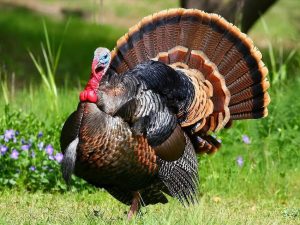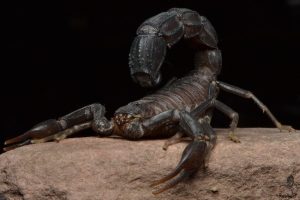The Alligator Snapping Turtle is considered one of the most ancient animals still in existence today. With its prehistoric and primitive appearance, this turtle is a popular choice for many people looking for a unique pet. If you’re interested in this species and want to know how much it costs and how to care for it, let’s explore all the details in the following article from Know All Animals!
Scientific Classification
- Kingdom: Animalia
- Phylum: Chordata
- Class: Reptilia
- Order: Testudines
- Suborder: Cryptodira
- Family: Chelydridae
- Genus: Chelydra
- Species: C. serpentina
1. Understanding the Alligator Snapping Turtle
The Alligator Snapping Turtle, with the scientific name Macrochelys temminckii, is an ancient species of turtle that was first discovered in the Americas. Today, this turtle can be found in most parts of the world and is a very popular pet. They have a unique, bizarre, and somewhat mysterious appearance, yet they retain the same natural habits as regular turtles.
1.1. Physical Characteristics of the Alligator Snapping Turtle
The Alligator Snapping Turtle is known as one of the largest freshwater turtles in the world. An adult can have a shell size of over 60 cm (24 inches) and a maximum weight of up to 125 kg (275 lbs). With their massive size and strange physique, these turtles look exactly like prehistoric turtles from long ago.
The back of the turtle’s shell has a very clear saw-toothed shape, along with three rows of spikes that run down the length of the shell. The bottom of their shell is reduced, forming a cross shape. Their shells are typically a dark brown to gray color, and the color fades to a lighter shade on the bottom.
This turtle has a very sharp and strong mouth that can snap through hard objects or food. If you are unlucky enough to get bitten by this turtle, it could even bite off your finger. They also have four rather short, large legs with very sharp claws. Overall, this ancient turtle is one of the few animals with the appearance of a prehistoric creature that still exists today.
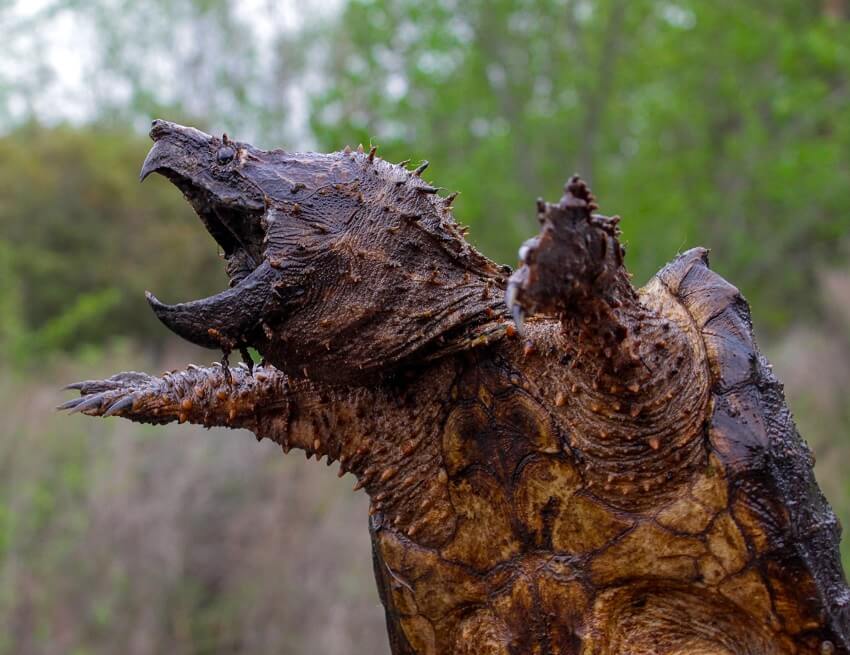
1.2. Breeding Habits of the Alligator Snapping Turtle
According to our research, Alligator Snapping Turtles begin nesting and laying eggs from about April to June each year. After mating, the female will lay 9-44 eggs in a hole near a body of water. Mating occurs in the spring, and the female will lay her eggs about two or three months later. After laying the eggs, the female will not incubate or protect them; the eggs will hatch on their own from the heat in the nest after about 100-140 days. A special thing about this turtle is that the temperature in the nest determines the sex of the hatchlings. If the nest temperature is warm, the eggs will hatch into females, and if the temperature is cool, they will hatch into males. This turtle reaches the reproductive stage when it is 11-13 years old.
After hatching, the young turtles will crawl out of the hole and find their way to the nearest body of water. In appearance, the hatchlings are similar to the adults. The biggest danger for young turtles after hatching is alligators, snakes, pythons, and predatory birds, while the biggest enemy of this turtle is humans.
This species in particular, and turtles in general, tend to have a very long lifespan. Their lifespan in the wild is about 11-45 years, with many individuals reaching up to 70 years.
1.3. Temperament and Behavior of the Alligator Snapping Turtle
This turtle species primarily lives in water and will only go ashore to dig a hole and lay eggs. They use a worm-like lure on their tongue to attract prey and snap it up when it gets close. When hunting, they will lie still in a pre-dug hole and wiggle their worm-like lure to attract prey, which is a very effective hunting strategy.
They are considered to be quite docile and not very aggressive. However, their bites are incredibly powerful and can be dangerous to humans.
1.4. Habitat of the Alligator Snapping Turtle
This is one of the turtle species that can adapt to different living environments very quickly and effectively. In addition to their natural habitat, their preferred environments are flooded areas, rivers, lakes, and swamps. In captivity, to ensure the turtle’s stable development, the temperature needs to be maintained at 25-27°C (77-81°F). This turtle has very good health and a strong immune system, so it rarely gets sick. Additionally, they are omnivores, easy to care for, and provide a high economic return.
2. Popular Types of Snapping Turtles Today
There are several types of snapping turtles being raised today. When you’re looking to buy one as a pet, you should research carefully to choose the most suitable type. We have found that there are two of the most popular types today: the Alligator Snapping Turtle and the Common Snapping Turtle. Specifically:
2.1. Alligator Snapping Turtle (Macrochelys temminckii)
The Alligator Snapping Turtle has an extremely imposing and fierce appearance. They originate from North America, are large, and are a carnivorous species. An adult Alligator Snapping Turtle can reach an average weight of 60-80kg (132-176 lbs), with some individuals reaching nearly 300kg (660 lbs). Because of their fierce appearance, Alligator Snapping Turtles are highly sought after by many people to keep as pets.
2.2. Common Snapping Turtle (Chelydra serpentina)
The Common Snapping Turtle has a gentler appearance than the Alligator Snapping Turtle. The Common Snapping Turtle is native to North America, Southern California, and Georgia. It is a type of freshwater turtle that usually lives in rivers and lakes and has three rows of sharp spikes on its shell. An adult Common Snapping Turtle can have a shell size of up to 50cm (20 inches) and weigh 40-50kg (88-110 lbs).
The Common Snapping Turtle is further divided into four different types:
- The Common Snapping Turtle
- The Florida Snapping Turtle
- The South American Snapping Turtle
- The Central American Snapping Turtle

3. Tips for Effectively Raising Snapping Turtles
Understanding this turtle species will make the process of raising this reptile as effective as possible. If you’re interested in the techniques for raising this turtle, here’s what you need to know.
3.1. Choosing Your Turtle
Choosing a turtle is a matter of personal preference and what you’re looking for. You can choose either an Alligator Snapping Turtle or a Common Snapping Turtle. Because this turtle species has a strong immune system, raising them from a young age is very easy and doesn’t pose too many risks.
3.2. The Tank
An adult snapping turtle is quite large, with some individuals reaching over 30 kg (66 lbs) and some even over 100 kg (220 lbs). The shell can grow to over 55 cm (22 inches). Therefore, the tank needs to be quite large. According to experts, the minimum tank size for one adult needs to be at least 2.4 m² (26 ft²). For a baby turtle, the tank can be smaller, depending on the owner’s resources.
The height of the tank also needs to be sufficient, so that the turtle can stand up without touching the surface and still have enough space to move around comfortably. Furthermore, you need to equip the tank with a powerful filter to keep the water clean and a pump to provide oxygen. You also need to maintain the water temperature at 25-27°C (77-81°F), which may require using a water heater or a heat lamp constantly during the winter.
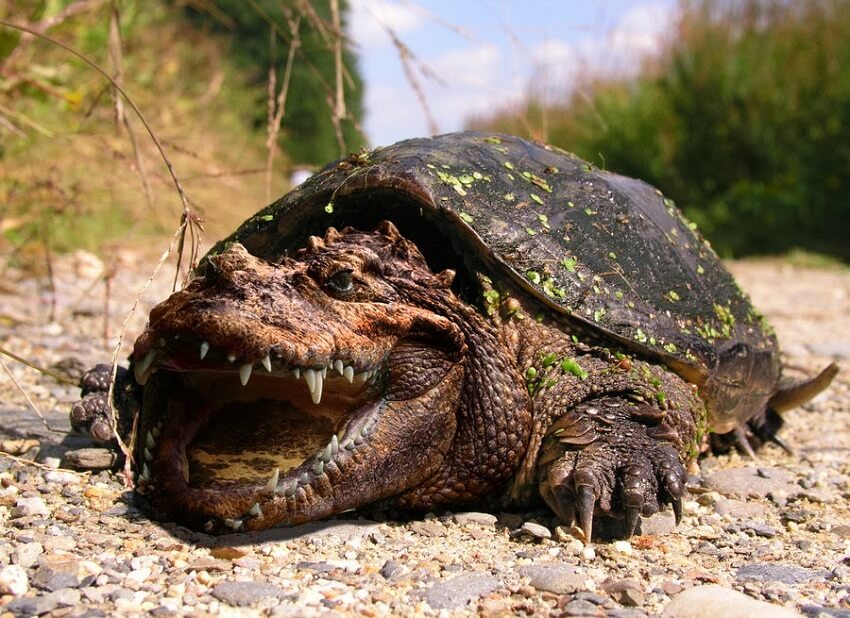
3.3. Tank Environment
This species loves to swim and soak in water. Therefore, the tank needs to have separate water and dry areas for the turtle to swim and rest. Both areas need to be wide enough for the turtle to move around easily. The temperature in the tank needs to be maintained at 25-27°C (77-81°F) at all times. You will need to use a water heater or a heat lamp continuously during the winter. Additionally, they need about 12 hours of light per day from a UV lamp when kept indoors. You should also add logs, rock crevices, and plants to the tank to create a natural environment for the turtle and provide it with places to hide.
3.4. What Do Snapping Turtles Eat?
The snapping turtle is an omnivorous species, so it can eat animals smaller than itself. In the wild, they may eat shrimp, fish, snails, birds, squid, alligators, and more. In captivity, you can feed them other types of food like meat, fish, mice, ducklings, and chicks. You can also give them vegetables such as carrots, lettuce, berries, corn, and apples.
You should feed them at a specific time of day to establish a routine. The food should be divided into several small portions to help their digestion.
3.5. How to Care for a Snapping Turtle
This turtle species is very easy to care for. They have very good health and a strong immune system, so they rarely get sick. However, you must ensure that the temperature is always maintained between 25-27°C (77-81°F). You also need to change 25-50% of the water each week, depending on the water level of the tank.
You also need to adjust the water’s pH level to suit them. A pH of around 7.0 is best. You must be careful to never remove any attached dirt, algae, or moss from the turtle’s shell, as doing so can damage the shell in a short amount of time, which is very dangerous for them. In captivity, this turtle can live for 20-70 years if it is cared for properly.
4. How Much Does an Alligator Snapping Turtle Cost?
With their large, powerful, and fierce appearance, the price of an adult Alligator Snapping Turtle is quite high. However, for reptile lovers, especially turtle enthusiasts, they are often willing to spend any amount to find the perfect turtle.
The price of these giant turtles is not fixed and varies significantly by region. The price also depends on many factors, such as size, weight, type of turtle, age, and physical characteristics. However, here are the current market prices we’ve found:
- A baby Alligator Snapping Turtle currently costs between 40-80$ per turtle. This is the price for small, non-adult turtles; adult turtles will cost much more.
- A baby Common Snapping Turtle is cheaper, costing between 20-40$ per turtle. This is also for small, non-adult turtles.
Currently, the trend of raising this type of turtle in our country is not yet widespread, so their numbers are quite low and scarce. This makes the price of these turtles very high and makes it difficult to find the perfect turtle.
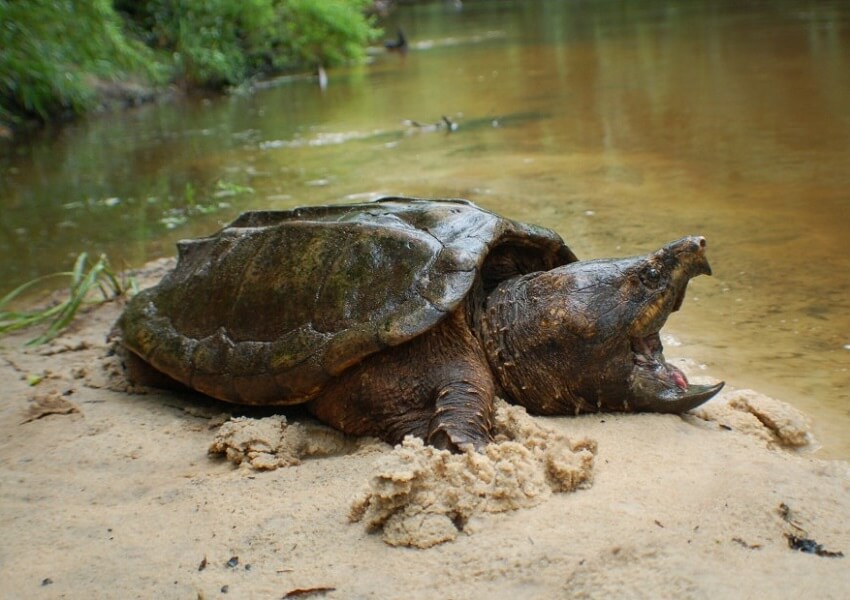
5. FAQs
1. Are Alligator Snapping Turtle dangerous to humans?
While not typically aggressive in the water, they can deliver a powerful bite if provoked on land. It’s best to admire them from a safe distance.
2. Where do Alligator Snapping Turtle live?
They inhabit freshwater environments like ponds, lakes, swamps, and slow-moving rivers across North America, from southern Canada to the Gulf of Mexico.
3. What do Alligator Snapping Turtle eat?
They are omnivores, feeding on fish, amphibians, insects, aquatic plants, and even carrion. Their diet makes them important for maintaining ecosystem balance.
We hope you’ll be able to find a reputable seller and choose the turtle that best suits your needs. This has been Know All Animals‘ detailed information on this ancient and giant turtle species. We also hope we’ve accurately answered your questions about how much an Alligator Snapping Turtle costs and how to care for one. If you still have questions, please leave a comment, and we will get back to you as soon as possible. Thank you for reading our article.
References: https://en.wikipedia.org/wiki/Alligator_snapping_turtle

